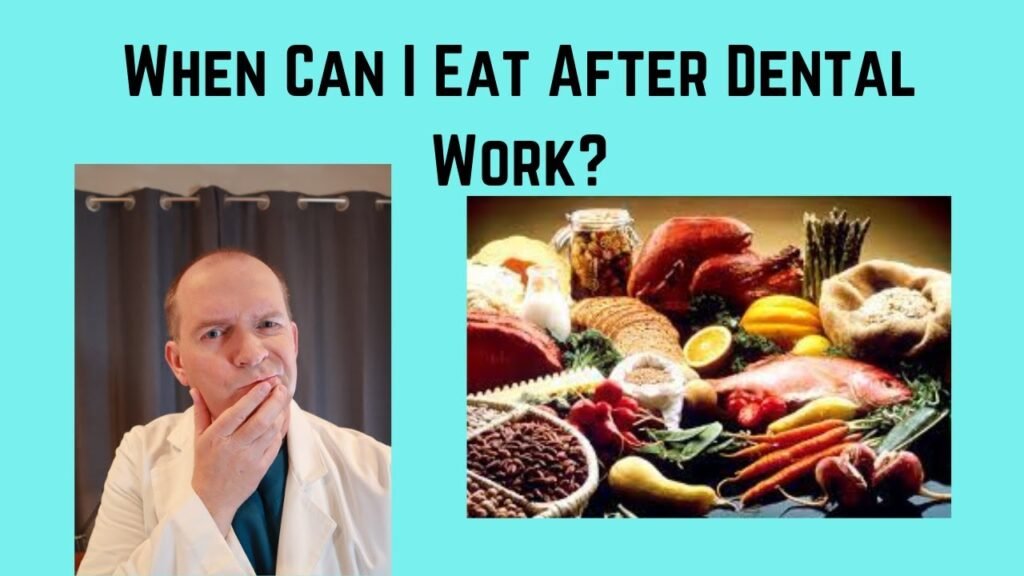Eating After Tooth Extraction: A Quick Guide

If you've recently undergone a tooth extraction, you may be wondering when it's safe to eat again. The recovery process is crucial for promoting healing and preventing complications, so it's important to know the best time to start eating solid foods. In this article, we'll explore the timeline for eating after a tooth extraction and provide tips for a smooth and comfortable recovery. Whether you're craving your favorite meal or simply looking for guidance, we've got you covered.
How long should I wait to eat after getting my tooth pulled?
After getting your tooth pulled, it is recommended to wait about an hour before eating. During this time, you can remove the gauze sponges from your mouth and have something to eat. It is important to choose soft foods for the first 24 hours after surgery to avoid any discomfort or irritation in the surgical area.
It is advised to avoid hot foods and drinks for several hours after getting your tooth pulled. Opting for cooler or room temperature foods can help prevent any unnecessary pain or complications. By following these guidelines, you can ensure a smoother and more comfortable recovery process after your tooth extraction.
Remember to listen to your body and only eat when you feel ready. It is important to prioritize your oral health and follow the post-operative instructions provided by your dentist or oral surgeon to promote proper healing and minimize the risk of infection. By being mindful of what you eat and when you eat, you can aid in the healing process and get back to feeling like yourself sooner.
How long should one wait to drink water after getting a tooth pulled?
After getting a tooth pulled, it's important to wait at least an hour before drinking water to allow a blood clot to form. Once the clot is formed, it's crucial to stay hydrated by drinking plenty of water, but be cautious not to swish it around in your mouth or use a straw to avoid disturbing the clot.
It's recommended to wait at least an hour after getting a tooth pulled before drinking water, allowing a blood clot to form. Once the clot is formed, it's essential to stay hydrated by drinking water, but be mindful not to disrupt the clot by swishing water in your mouth or using a straw.
If my tooth extraction is still bleeding, is it safe for me to eat?
Yes, you can eat after a tooth extraction, but it's important to stick to soft or liquid foods to avoid further bleeding. It's best to avoid anything that requires vigorous chewing or could potentially disturb the extraction site. Additionally, refrain from consuming hot liquids as they can dissolve the blood clot, prolonging the bleeding. Stick to gentle, easy-to-eat options for the first 24 hours to promote proper healing.
Post-Extraction Eating: Dos and Don'ts
After a tooth extraction, it is important to follow proper post-extraction eating guidelines to promote healing and prevent complications. One major "do" is to stick to soft, easy-to-chew foods such as yogurt, mashed potatoes, and smoothies. These foods are gentle on the extraction site and reduce the risk of irritation or infection. Additionally, it is important to stay hydrated by drinking plenty of water throughout the day.
On the other hand, there are some "don'ts" to keep in mind when it comes to post-extraction eating. Avoid crunchy, hard, or sticky foods that can get stuck in the extraction site or cause discomfort. This includes nuts, popcorn, and chewy candies. It is also best to steer clear of hot or spicy foods that can irritate the healing area. By following these dos and don'ts, you can support a smooth recovery process and minimize any potential complications.
In conclusion, post-extraction eating plays a crucial role in the healing process after a tooth extraction. By choosing soft, easy-to-chew foods and avoiding hard or sticky items, you can help prevent infection and promote faster healing. Remember to stay hydrated and listen to your body's signals for when you are hungry or full. Following these guidelines will help you recover quickly and get back to your normal routine in no time.
Navigating Food Choices After Tooth Removal
After having a tooth removed, it's important to be mindful of the foods you consume to avoid any complications or discomfort. Stick to softer options like yogurt, mashed potatoes, and smoothies in the days following the procedure. Avoid hard, sticky, or crunchy foods that could irritate the extraction site or get stuck in the socket. As you heal, gradually reintroduce more solid foods, starting with tender meats, cooked vegetables, and soft fruits. Remember to chew on the opposite side of the extraction site to prevent any pressure or injury to the area. By making smart food choices, you can aid in a smooth and speedy recovery after tooth removal.
When it comes to navigating food choices after tooth removal, it's crucial to prioritize your oral health and comfort. Opt for nutrient-dense, easy-to-chew options that won't cause further irritation or pain. Consider incorporating protein-rich foods like eggs, tofu, and fish into your diet to support the healing process. Additionally, stay hydrated and avoid sugary or acidic beverages that could potentially aggravate the extraction site. By being mindful of your food choices and focusing on nourishing, gentle options, you can promote healing and prevent any post-procedure complications. Your diet plays a significant role in the recovery process, so make sure to make choices that prioritize your oral health.
Remember to follow your dentist's instructions carefully and prioritize your oral health during the healing process. While it's important to give your mouth time to recover, you can start introducing soft foods back into your diet within a day or two after a tooth extraction. By being patient and taking proper care of your mouth, you'll be back to enjoying your favorite foods in no time.